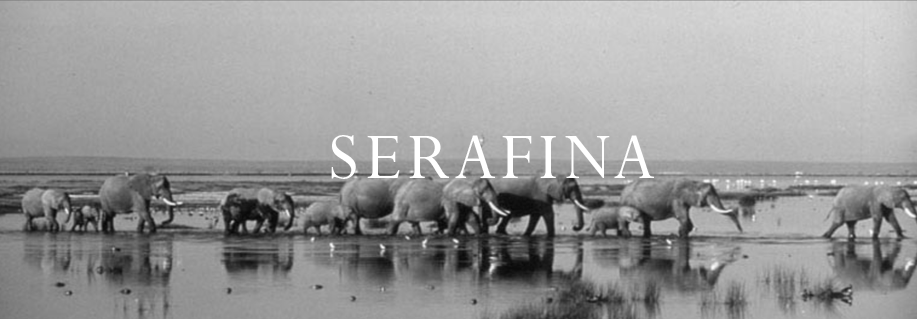- Wenn du dich für eine Auswahl entscheidest, wird die Seite komplett aktualisiert.
- Wird in einem neuen Fenster geöffnet.
Serafina

Born in 1974 to Sandy, the family matriarch, Serafina was a member of the so-called SA family. The family was first sighted and photographed in 1973 by Cynthia Moss, a pioneering elephant researcher working along Amboseli Trust For Elephants.
Serafina became a mother very early in December 1985. She reached sexual maturity at nine years old, conceived, and then gave birth at 11 years old. Most females do not conceive until they are 11 and then produce their first calf at 13. Given her extreme youth, the researchers were not expecting Serafina’s first calf to survive, but she grew to adulthood.
Serafina, her first and further children were living a peaceful life until 1997, which turned out to be a tragic year. First Sandy, Serafina’s mother, disappeared in January – suspected to have died of natural causes. She was 54 years old and not many of the Amboseli elephants get beyond this age. Her four-year-old son Sabachi, Serafina’s brother, was just old enough to survive without a mother. Then Serafina’s six-year-old daughter disappeared. The researchers suspected a Maasai warrior spearing due to human-wildlife conflict.
Savita and the SAs have managed to recover from these losses, however in 2009 Amboseli (Kenya) was struck by the worst drought in living memory. The elephants weakened and additionally seemed to have succumbed to disease as well. To add to the troubles, the researchers witnessed an upsurge of poaching for ivory, possibly catalysed by the number of carcasses, and the desperate economic losses people in the ecosystem were suffering.
The calves and elderly elephant family members were first to go. Of the adult females over 50 years old only two survived in Amboseli. Over half of the matriarchs died and most elderly females, including Serafina. Due to the resurgence of poaching, and the fact that both SA families used areas that had become dangerous, the researchers were never sure whether Serafina died as a result of the drought or at the hands of poachers.
Photo copyright and text: Cynthia Moss, Amboseli Trust For Elephants


